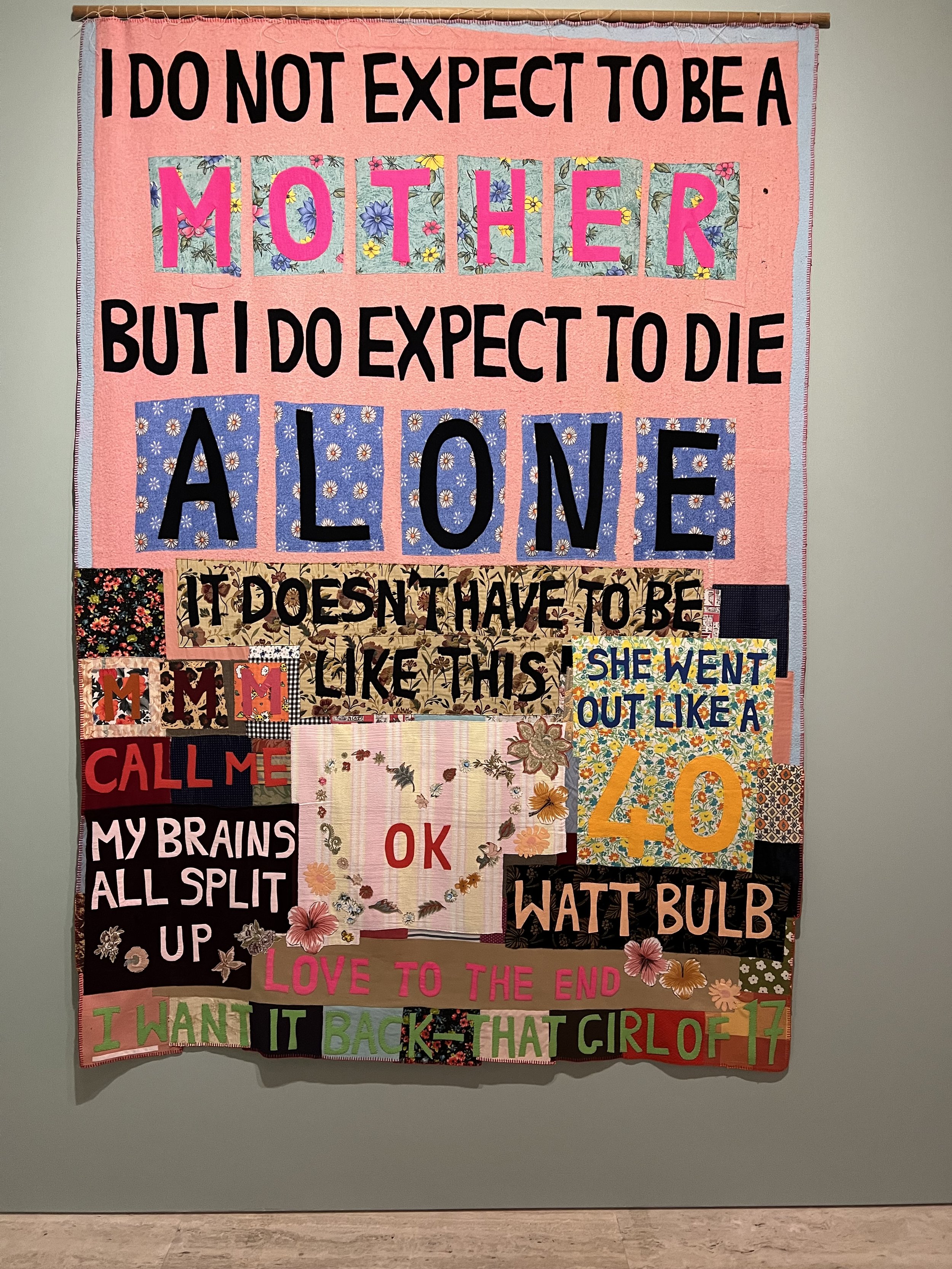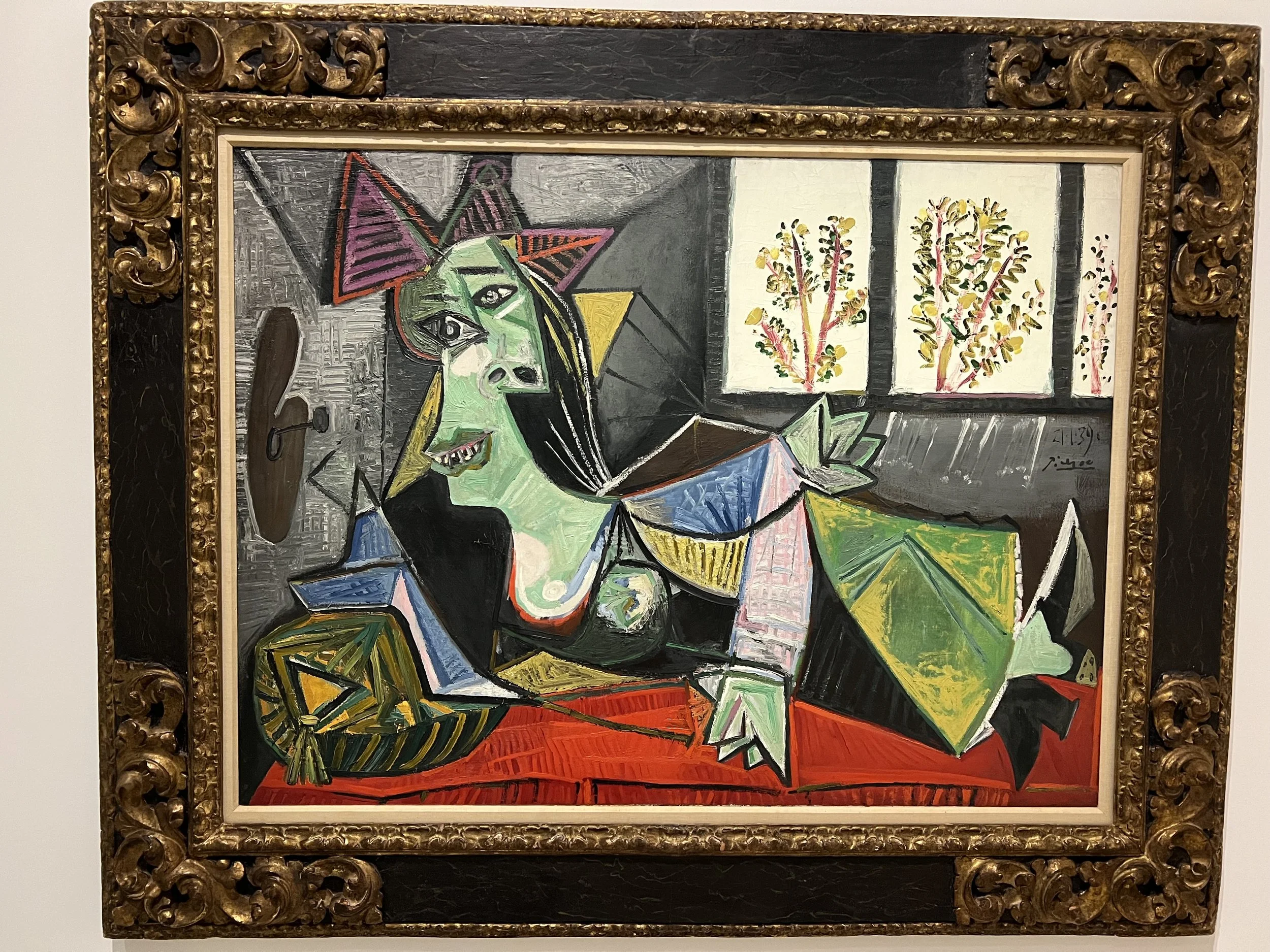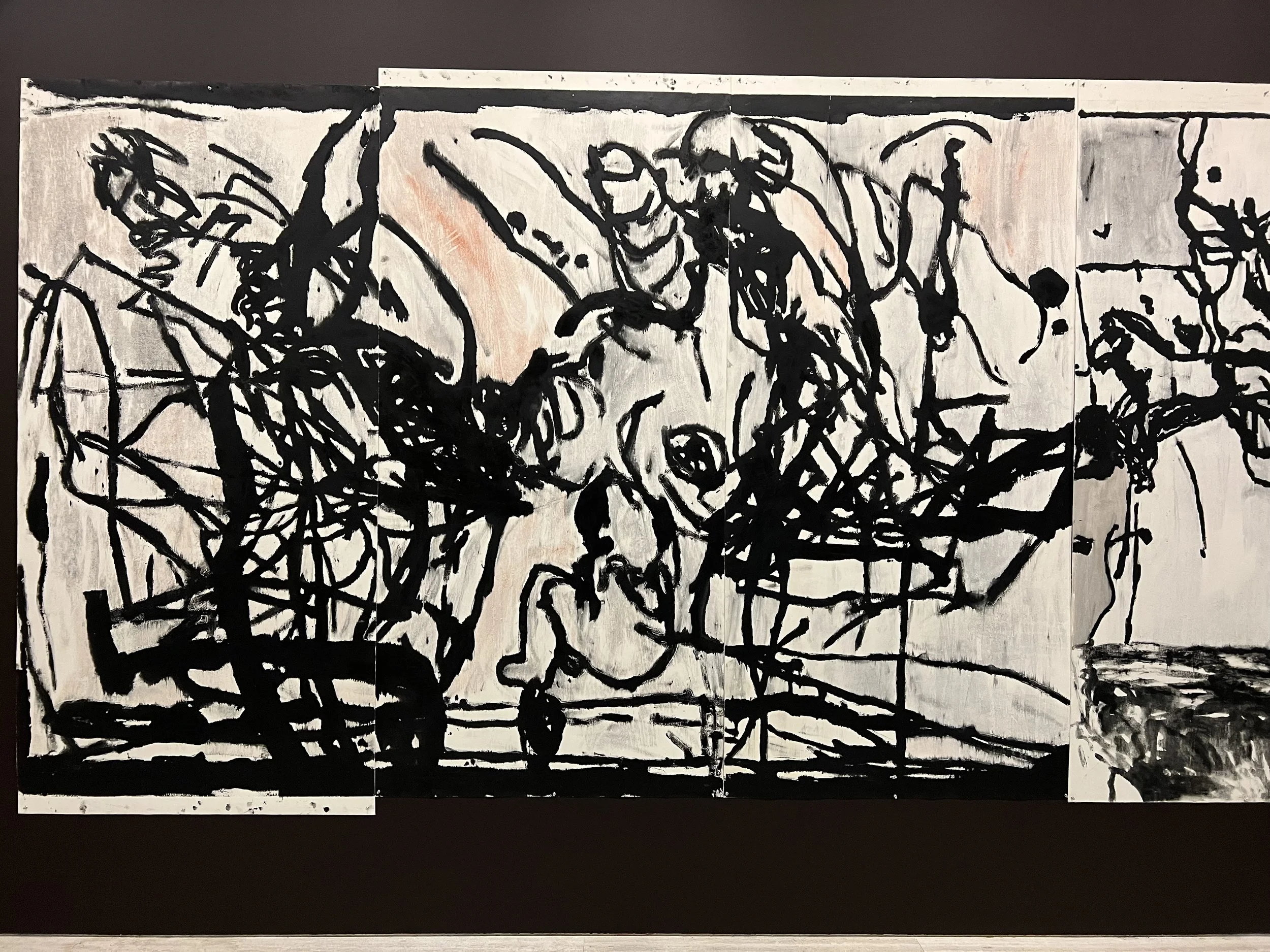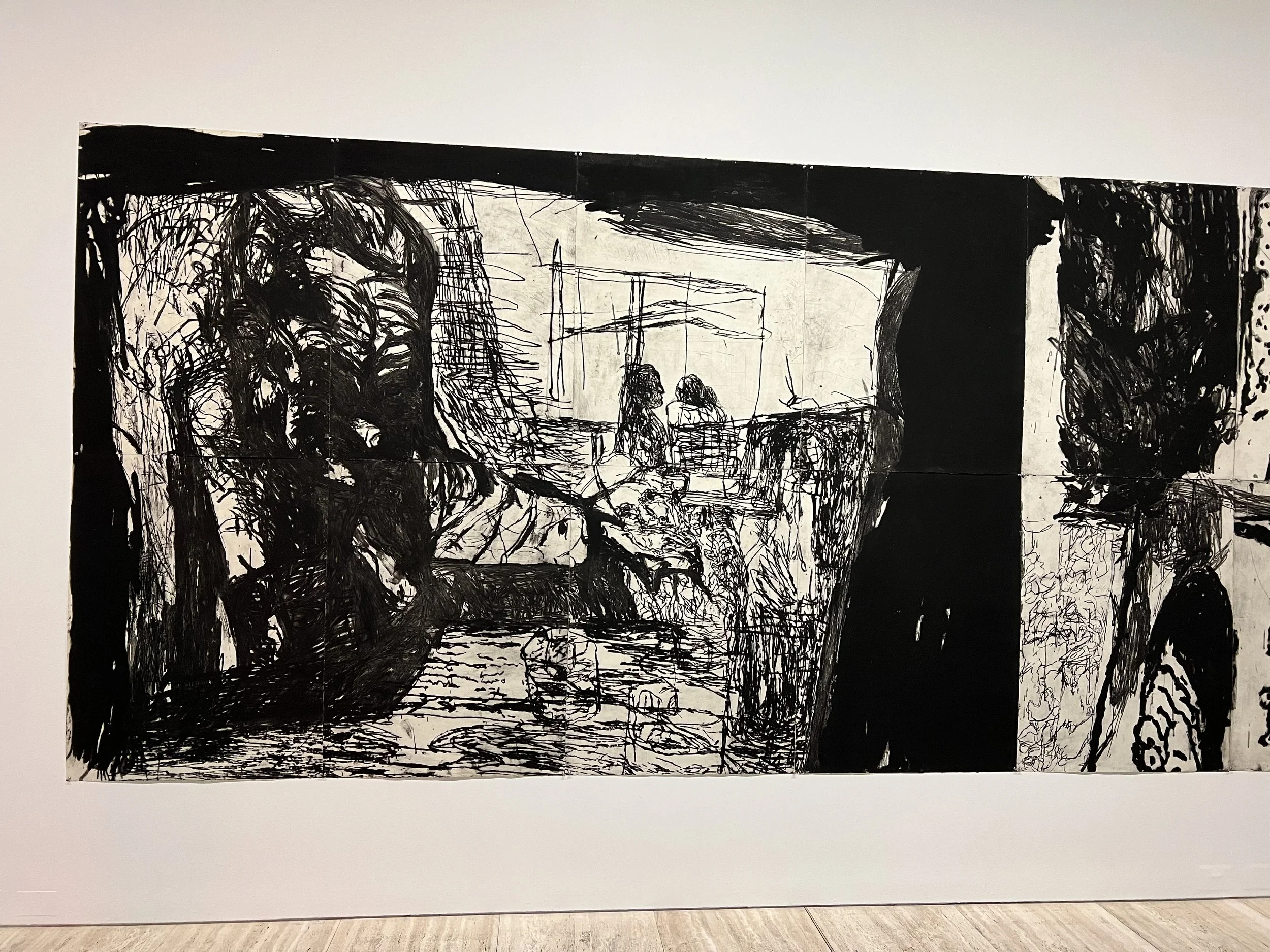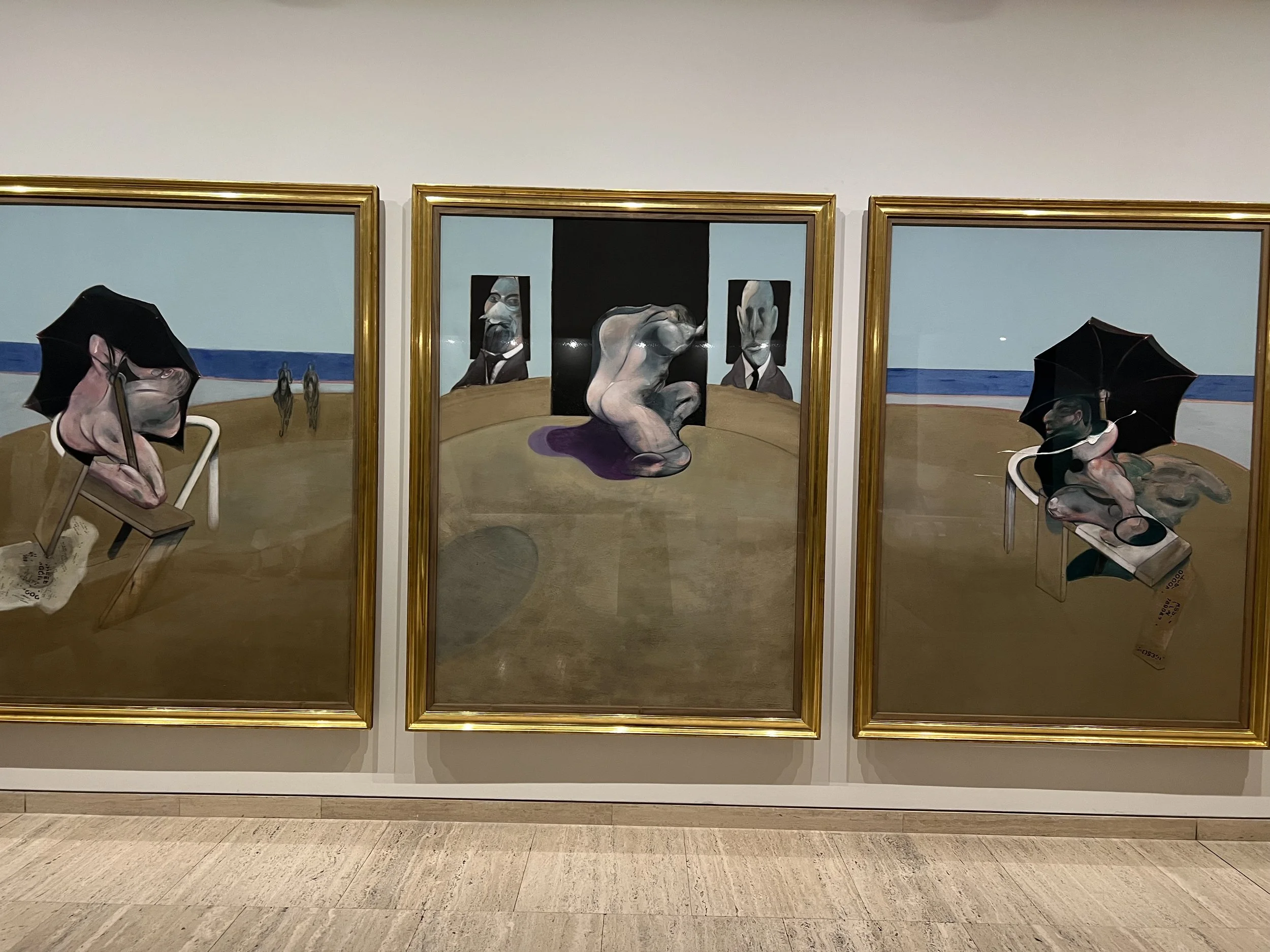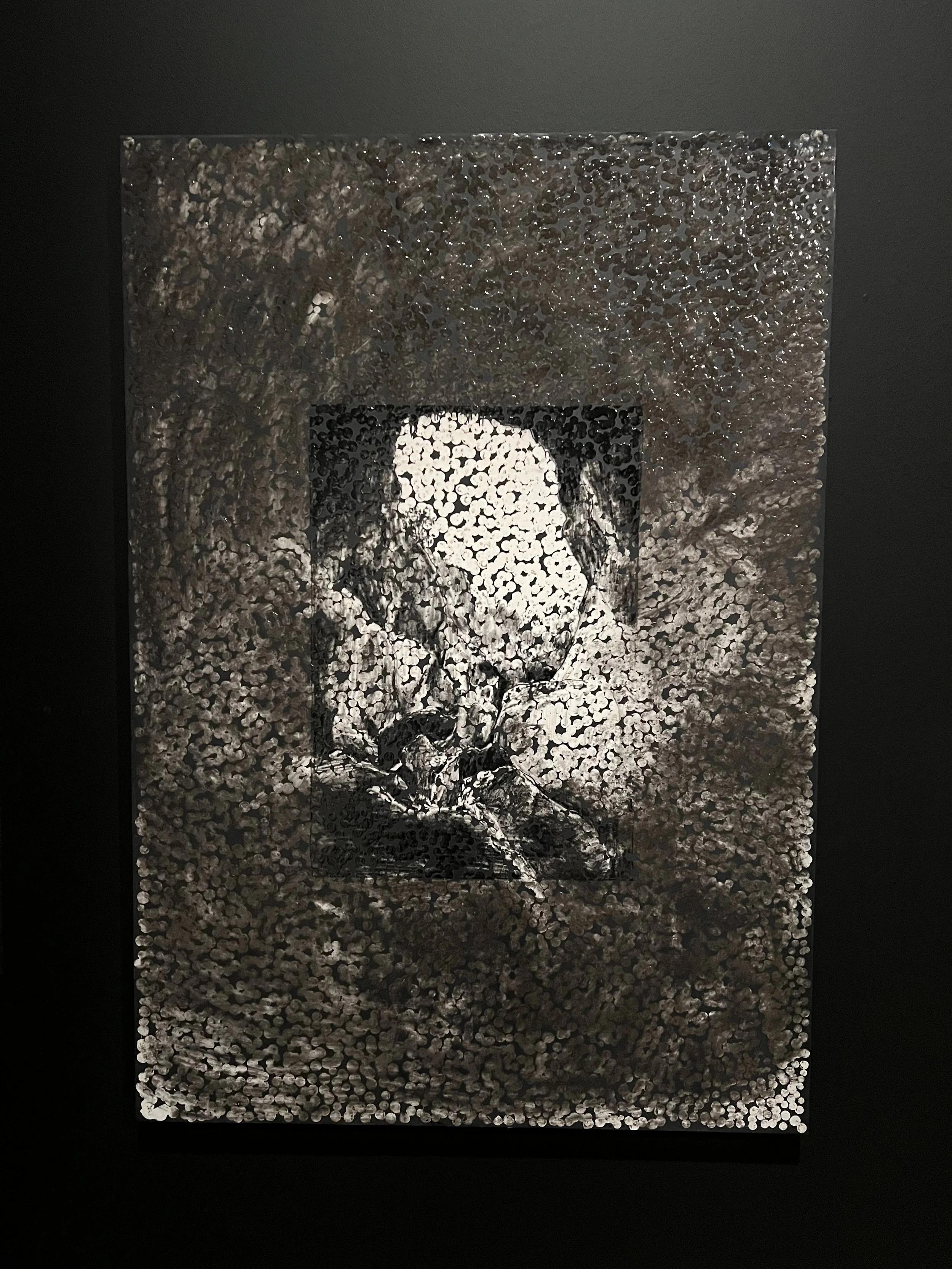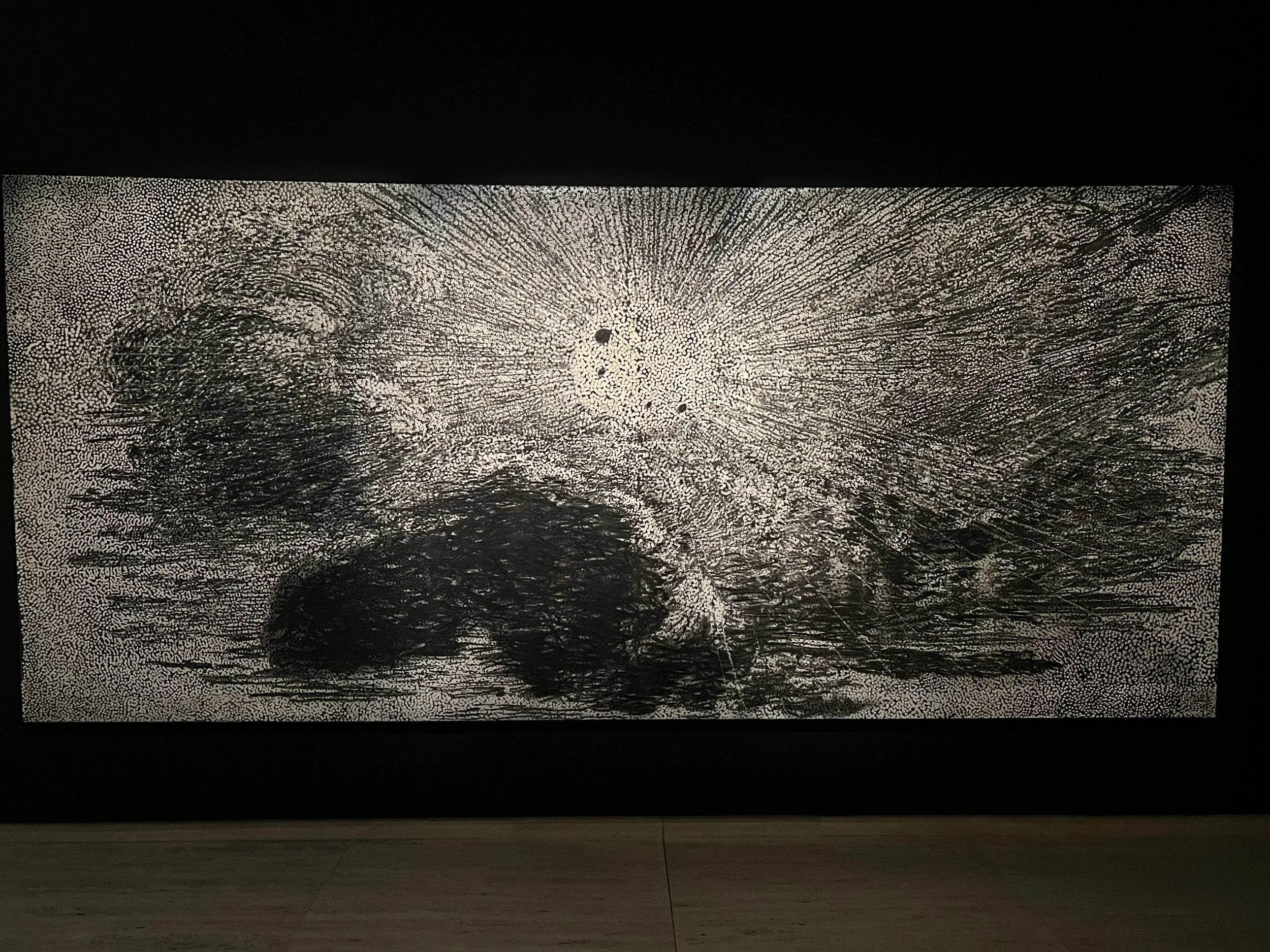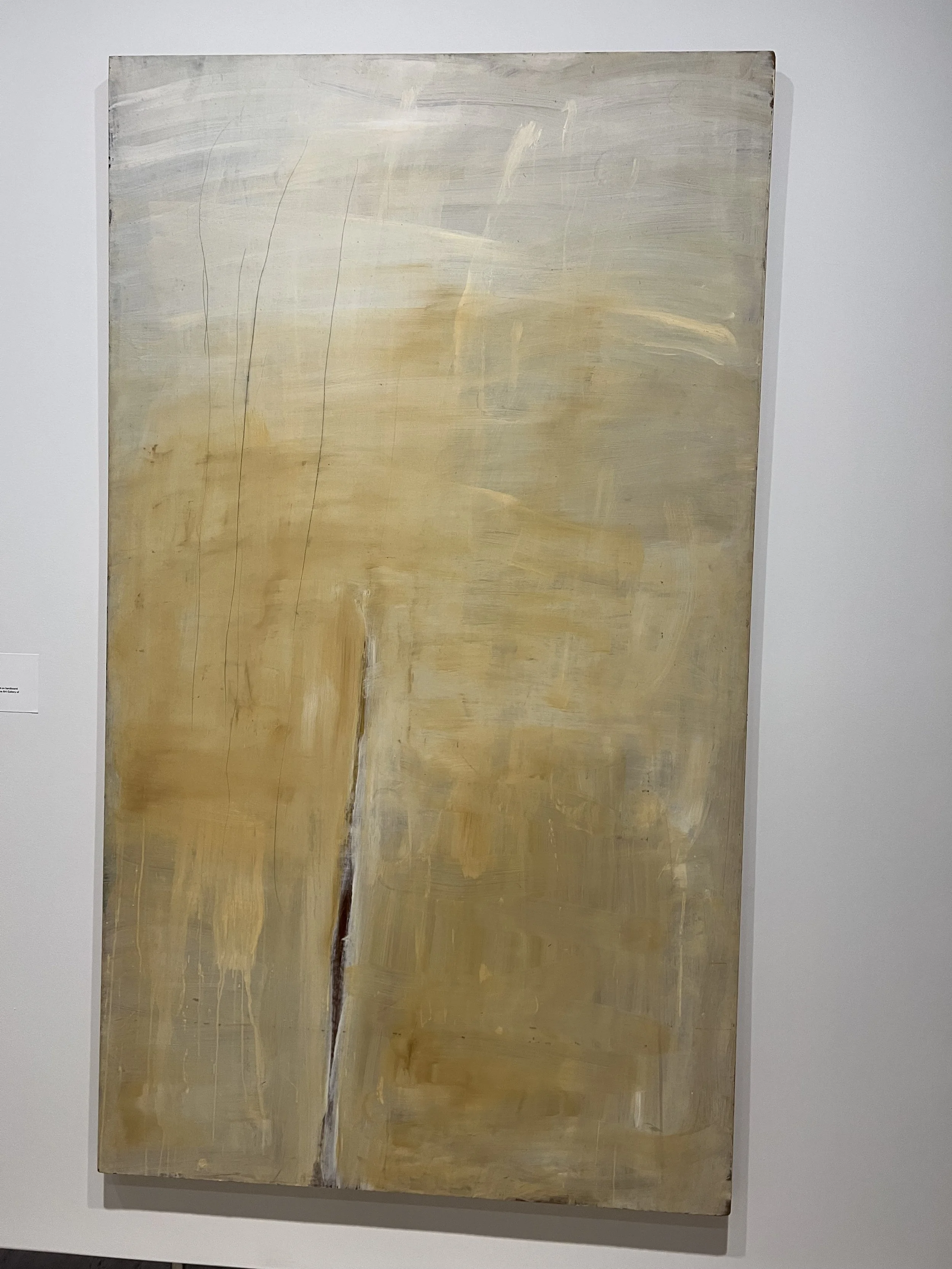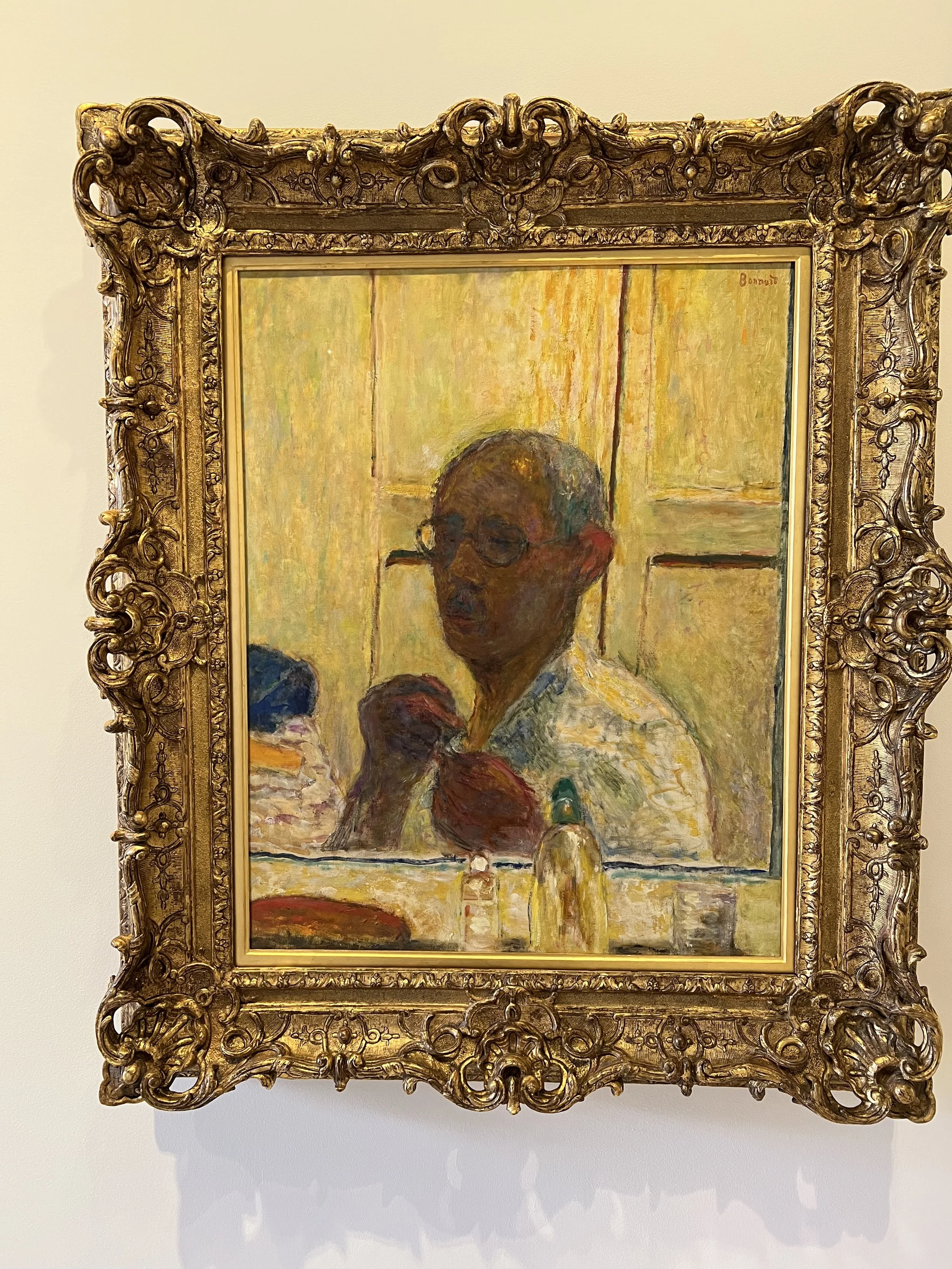Post 4 - Sydney
Exhibitions
Visit to Sydney Modern Project
Artists whose work stood out for me as resonant with my work, even if the work looks very different to mine.
Tracy Emin (1963 - )
Tracy Emin often uses words in her art.fig.1
The way she combines visuals and text has an ability to make people feel things and think deeply. Emin's pieces feel personal and empowering. She demonstrates how to be brave and create intimate images, inviting people into her world and making them think about their own lives. It's this connection and impact that makes me want to explore more personal stories in my own work. I see this as something that I will do in an abstract way.
fig 1
Tracy Emin
I do not Expect 2002
applique blanket
2. Picasso (1881-1973)
Looking at the figure within an interior is another interest of mine. I have been studying closely the colour relationships Picasso uses as well as the way he organises space, dividing the figure at the same time as dividing the surrounding space. fig. 2
Fig 2, Pablo Picasso 1881-1973
Woman lying on a couch (Dora Marr) 1939
Oil on canvas
3. Mike Parr Born: 1945 (age 78 years), Sydney, Australia
The works by Mike Parr (fig.3 &4), grabbed my attention as the methods he is using I would like to research more. He builds up a ‘field’ of marks. For Parr, the process of perception is indistinguishable from that of remembering, and the struggle is in how to reconcile the workings of memory, sight and thought. He starts with trying to draw his self portrait and then the memory or thought comes to him and the line begins to become entangled with this.
“It’s a sort of start-again situation, an attempt to know the unknowable,”1
Things I will try at the studio
a simple transfer of drawing onto tracing paper could be a great starting point to ‘create space’
I can layer this with other techniques eg ink monotypes, graphite powder.
I also liked the way Parr has drawn his studio and located himself within this space
Drawing whatever is around me is a good way into abstract work even though its origins start as ‘real’.
The space he has created is unfolding as he draws, much in a similar manner to Hockneys early photographic collages, Parr notes what is closest to him then expands out.
There is blurred peripherals and odd perspective as the eye moves around the scene. The act of seeing is revealed as much as the interior itself.
The large scale helps to place the viewer in the scene
fig. 3
Mike Parr Australia b1945
Introjection of a horse 2002
carborundum from woodblock on paper bonded to canvas
fig 4
Mike Parr
The Plague of Fantasies 1 2010
There is a great deal of theatricality in Parr’s work, he is a performance artist as well and combines his art with action. This stage-like quality in the prints above also reminded me of the next artist, even though the concerns seem at first very different. The self portrait and projection of the self into ones art, links these artists in my mind.
Francis Bacon (1909 – 1992)
Francis Bacon creates imaginary space as well as a painted space, with references to early photography, images of turn of the century wrestlers and staged interiors that mix with landscape. I am noting his flat and colourful backgrounds upon which he lays his more active dramatic elements such as the figure. fig.5
fig 5
Francis Bacon
Triptych 1974-77
oil, pastel and dry transfer lettering
4. DANIEL BOYD
born 1982 in Cairns, Australia
Kudjla/Gangalu, North-East region
lives and works in Cairns, Australia
Boyd’s pixel - like dots of archival glue on linen support a more tonal and abstract paint on top, he creates an atmosphere of ‘active molecular activity’. directly referencing photographs. His building of space is also powerful, and often for me theatrical as if a curtain has been pulled back to reveal the landscape resented for our consumption. He evokes the colonial air of ownership and distance from the object simultaneously as he reclaims it.
In Fig. 6 (see below), along with similar scenes Boyd has painted throughout his career, recalls the allegory of Plato’s cave. In the allegory, a group of prisoners are chained together in a cave and all they see of the outside world are the shadows cast on its interior wall. These shadows, are metaphors for our faulty perception of reality. Boyd is interested in the evocative potential of shadows and their ability to alter our sense of reality. By invoking Plato’s cave, he is toying with the line between illusion and representation.
It is important for me to know the physicality of how a work is made as well as why. This often reveals other things the artist is trying to say. This is especially true of Daniel Boyds work as I found out. He says
“The physical nature of the surface of my works is the language that relates my ideas to the edge of the universe. Each dot is a transparent lens, the work is about perception or place in time and space. Each dot holds information and together they create narrative. The black space between the information is about comprehension and acts as a metaphor for what binds information and matter. “ 2
Fig 6, Daniel Boyd
Mouth of the Cave
2018
When I consider the other painting of his Fig.7 (Below) I see connections in ideas I have about the paintings I want to make and that of descriptions by writers of the sunsets or trees, caves, mountains, and how they stand in for the emotional landscape of the protagonists.
I am drawn yet again to this idea of the landscape standing in for emotional expression, and read an article about Thomas Hardy’s heroine Tess in Tess of the D’Urbiville.
'“When Thomas Hardy (1840-1928) penned his novel Tess of the D’Urbervilles in 1891, he infused his main character Tess with an emotional sensitivity towards landscape. A victim of manipulation by fate, she had lost her virginity in a rural tryst. Her inward feelings of grief found the sunset landscape to be an emotional topography, rather than some kind of external geography.”3
fig 7.
Daniel Boyd
sunset
5. Tony Tuckson
I have included this painting as I am curious about surface and light. fig.8
I wanted to remember his washes of colour as they could be a technique I can use to form the ‘airy’ sensations I want to create. The support of board is helpful for this purpose as the smooth surface reinforces the thin veils of colour and air-like atmosphere.
fig. 8
Tony Tuckson
untitles 1973
synthetic polymer paint and charcoal on hardboard
Pierre Bonnard (1867-1947)
Bonnard shows a wonderful representation of the artist as protagonist and also the viewer. fig. 9
We see him here looking into the mirror and simultaneously out at the viewer. He studies himself as we study him. The glowing yellow colours greatly interest me after all the black and white previous images and his creation of space within the frame is controlled and yet revolutionary for the time.
I would say this painting is a touchstone for my work.
I learn so much from seeing the original up close after studying the reproduction for so long. As always the mark making is varied and is something I can learn from, as well as his use of warm and cool colours adjacent to each other to depict light. Bonnard is within and without this painting, in other words he represents himself and simultaneously views himself from outside twice, in the mirror and in the painting - he is embedded in the picture staring out at us and at himself.
Fig 9, Pierre Bonnard
Self Portrait.1938-40
http://www.arndtfineart.com/website/artist_24864
https://www.phaidon.com/agenda/art/articles/2016/october/25/daniel-boyd-why-i-paint/
3 https://www.menziesartbrands.com/blog-post/229-arthur-boyd


